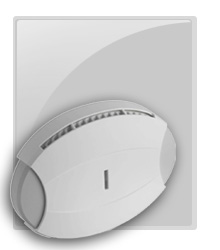
Now you may be asking yourself, "Femto-what? And who was the marketing genius behind that name?" While I can't answer the second question, I can help shed some light on the first. Femtocells are small cellular access points for indoor residential or commericial environments. The Femtocells are a combination of WiFI and cell and will use your broadband network to help get signals where access would otherwise be limited or not at all.
The access points will allow your phone to offload traffic through your broadband connection and offer cellular carriers the opportunity to address fixed mobile convergence markets with a highly attractive and efficient solution.
According to ABI Research, by 2011 the worldwide market for femtocell products is expected to reach nearly 19 million units per annum. An interesting factor that is often overlooked when considering the femtocell market is that of functionality. Initial offerings are likely to be simple affairs that rely on Ethernet connections to existing ADSL gateways.
The ABI Research Report Provides Answers on:
- How many femtocells will be in operation, and when?
- What types of customers will use femtocells?
- How many femtocells will be shipped?
- What are likely to be the most common architectures?
- What features will femtocells support?
- Who is addressing the femtocell market?
- What strategic options do companies have to better address this nascent market?
- What are the drivers behind the introduction of femtocell products?
According to ABI Research principal analyst Stuart Carlaw, "The real challenge today is balancing price with functionality. In order to get an affordable product on the market as early as possible, it is likely that most designers will opt for a basic feature set. However manufacturers and carriers alike will need to evolve this feature-set rapidly to take advantage of the femtocell offering's full potential."
An ABI Research study of femtocells indicates that the "holy grail" of implementations is likely to incorporate a Wi-Fi access point, an integrated ADSL gateway and an IPTV set-top box. One of the major determinants of this migration in feature sets will be the nature of a carrier's business. In order to maximize the femtocell's potential, the carrier must have its own broadband capability: incumbent DSL providers are likely to view the carrying of other companies' traffic over their broadband connections in a very poor light. Moves towards this capability are already visible in many markets; one example is Vodafone in the UK.
Carlaw adds, "As well as providing good indoor coverage and financial benefits to carriers through reducing network load and alternative routing of backhaul, femtocells provide cellular carriers with a valuable footprint in the home where the building blocks of a robust quadruple play can rest."
ABI Research's study, "
Femtocell Access Points: Fixed-Mobile Convergence for Residential, SMB, and Enterprise Markets" provides some much-needed clarity to a market that lacks definition and is still in the early days of its development. It delivers information that is critical for anyone wishing to develop a successful strategy for this highly lucrative market. The study forms part of the firm's
Wireless Infrastructure Research Service, which includes Research Reports, Research Briefs, Market Data, Online Databases, ABI Insights, the ABI Vendor Matrix, and analyst inquiry support.